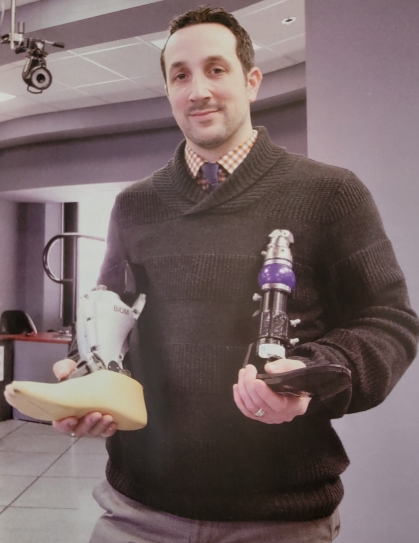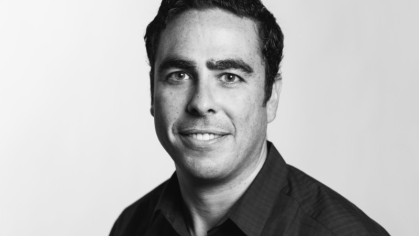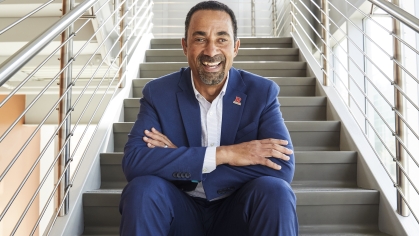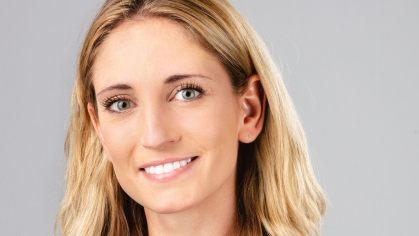"I loved my time at Rutgers and am happy to give back.” – Jason Maikos
After earning his PhD in biomedical engineering (BME) in 2007, Jason Maikos held a prestigious post-doctoral fellowship with the New Jersey Commission on Science and Technology. In 2010, he was hired as the inaugural director of the VISN 2 Biomechanics Research for the Advancement of Veteran Outcomes (BRAVO) lab at the New York Harbor VA, where he established a clinical research lab that is leading the future of limb loss research. His robust and collaborative research portfolio has received more than $17 million in grant funding to study limb loss and prosthetic outcomes. He is an active volunteer with the VA New York Harbor’s successful adaptive sports programs. He joined the BME faculty in 2021 as a part-time lecturer teaching its elective prosthetics course and serves as a mentor for BME senior design teams.

Why Rutgers for your PhD?
I’d been interested in biomedical engineering as an undergraduate at Stevens Institute of Technology, but since they didn’t offer it as a major, I created my own pathway. I was premed, but had no intention of going to med school, instead I supplemented that with mechanical engineering courses, and figured I could make up the rest in graduate school.
Rutgers‘ program was really appealing to me. Martin Yarmush was chair when I started, and was revamping the program, so it looked like an incredible opportunity to get in on the cutting edge of academics and research.
What do you most value about your Rutgers education?
I most value the faculty – especially David Shreiber, a BME professor and current vice provost for academic affairs. He taught me a way of thinking and the value in being able to solve any kind of problem. He helped teach my brain how to solve really complex issues: ask why something happens, come up with theories, and do the research. And that’s what I pride myself on now.
I also appreciate the support of Professor Charles Roth and Distinguished Professor Noshir Langrana who I learned so many life lessons from. He taught us to always be prepared – a lesson I took to heart.
What about your work with the VA?
The VA gave me the opportunity to develop a brand-new gait and motion analysis lab that’s part of the prosthetics service. The lab is pretty unique as about 90% of our work is research into prosthetics and limb loss, and the rest is clinical, dealing directly with veterans who have mobility challenges stemming from limb loss, neurological disorders, or orthopedic conditions.
For example, we’ve helped assess a device that can be worn around the ankle which vibrates to help patients with neuropathy keep their balance. The clinical side evaluates who might be a candidate for this device, but as a research lab we can write up and publish our findings to help the entire field.
What else sets your lab apart?
The VA has a competitive advantage. Veterans can come to our fully staffed, state-of-the-art prosthetics lab to receive their care. We also have access to the latest and greatest prosthetic technology, often before it reaches the civilian market. Veterans like to participate in research to help evaluate this technology to help other, future veterans, and we are basically a single payer system: the veterans pay zero dollars for all prosthetic care. We probably offer the best prosthetic care in the country.
We also take a holistic approach to care with adaptive sports program like Heroes on the Hudson, Pedals of Honor, and Veterans on Par, where the vets can take part in adaptive cycling events, adaptive sailing, kayaking, golf, and more.
What do you see in the future for prosthetic design?
My research is clinically based and will focus on how to develop better socket technology and better understanding of the biomechanics behind socket fit. With cutting edge imaging technology, such as partnering with Rutgers New Jersey Medical School that has one of the few biplanar fluoroscopy systems in the country, we look at skin strain on the residual limb as people walk, and what is causing the skin strain. Then, as engineers, we can help design a solution. Our goal is to give veterans who need prosthetics an independent lifestyle.
What’s it like to be back in the department as a part-time lecturer?
I loved my time at Rutgers, and I am happy to give back. I’ve been teaching the prosthetics elective course since 2021 to second semester seniors. I love interacting with great students. I also mentor senior design, and encourage their class projects, which give them an opportunity to experience real world applications and interact with my lab’s young engineers.


